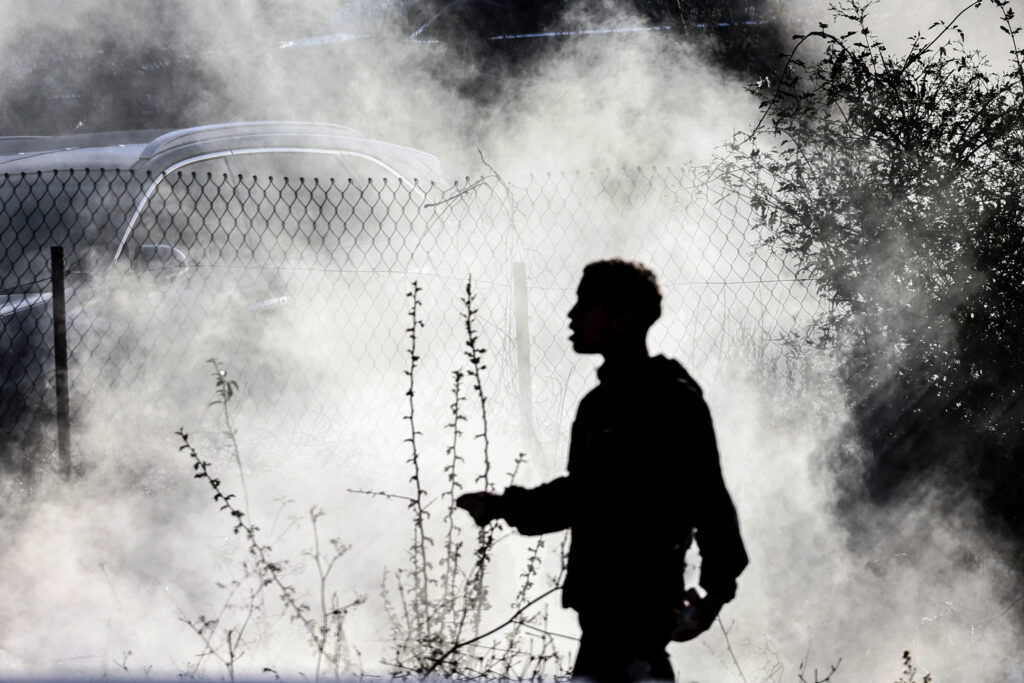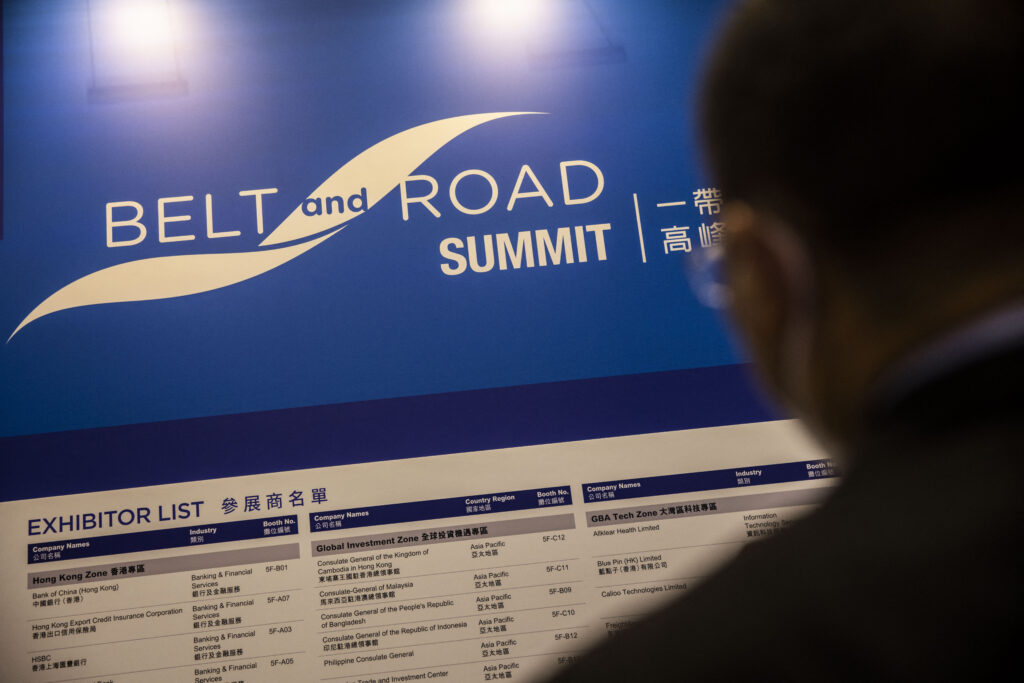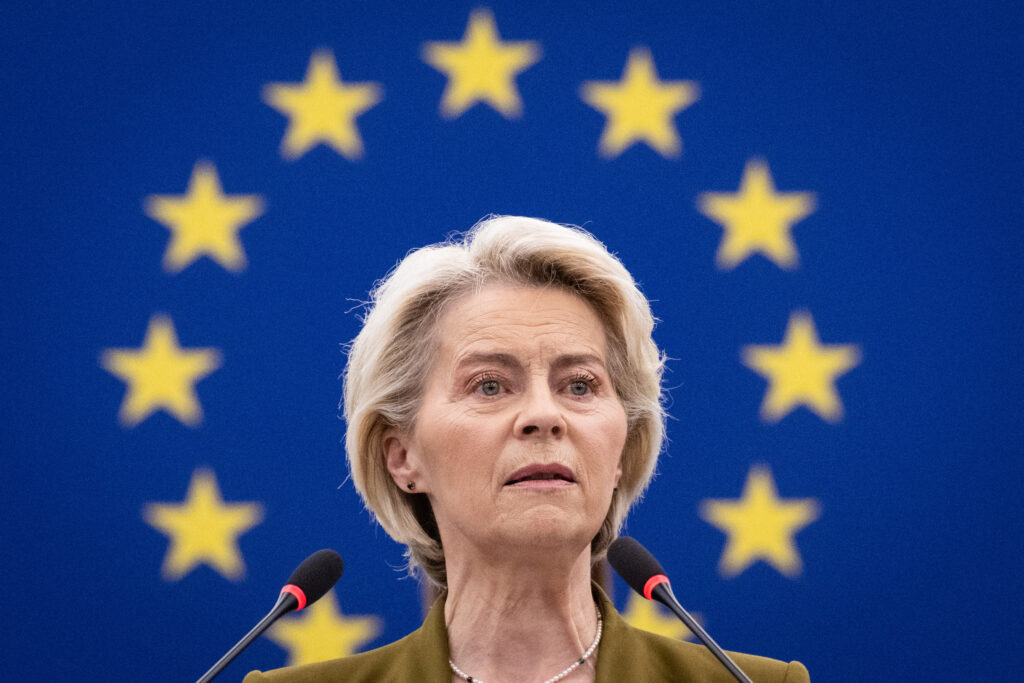Series Introduction
The Afghanistan Crisis: Anxieties and Trigger Points
The US withdrawal from Afghanistan has prompted a geopolitical free-for-all situation in the country, with regional, if not, extra-regional implications. It ceded the country swiftly to Taliban control, with China, Russia, and Iran all poised to forge close relationships with the new Afghan government. International players like Qatar, Turkey and Pakistan, which have had functional relations with the Taliban, have sought constructive engagement with the new government, to the extent of opening a pathway for them into the international system. Others, particularly the Central Asian states, the UAE and Saudi Arabia, are disquieted by security concerns, terrorism-related or otherwise. In Europe, the immediate impact of events in Afghanistan is having to manage a massive refugee crisis.
This series of Insights examines the implications of the US disengagement from Afghanistan, ranging from strategic openings in interstate relations to ground-level anxieties.
CLICK HERE FOR THE PDF
By James M. Dorsey*
This article looks at how Russia’s preoccupation with the war against Ukraine has created a further opening for Iran to enhance its geopolitical influence in the Central Asian region, an opportunity that first emerged with the US withdrawal from Afghanistan. For the Arab Gulf countries, on the other hand, the Ukraine war has taken Russia out of the security equation in the Middle East even as the reliability of the United States as a security guarantor in the region is perceived to have waned in the post-Afghanistan period.
The US withdrawal from Afghanistan was a geopolitical watershed one way or another. Its shockwaves continue to reverberate and are magnified by the wars in Yemen and now Ukraine. Coupled with the Russian invasion of Ukraine, the US withdrawal removed a major obstacle to Iranian projection in Central Asia and created an opportunity for Iran to potentially enhance its influence, increase trade, and expand security cooperation in Central Asia.[1]
America’s Increasing Unreliability as a Security Guarantor
It has not gone unnoticed in Tehran that the US withdrawal put one more nail in the coffin of an almost 80-year-old alliance between the United States and Iran’s arch-rival, Saudi Arabia.[2]
Already angry at US President Joe Biden’s refusal to deal directly with Crown Prince Mohammed bin Salman because of the 2018 Saudi killing of journalist Jamal Khashoggi, Saudi Arabia saw the bungled US withdrawal as further evidence of America’s increasing unreliability as a security guarantor.
The revival of security talks between Iran and Saudi Arabia in April 2022 highlighted the arc that links the Ukrainian and Yemeni wars with the US withdrawal.
The talks broke off shortly after the US withdrawal. However, they were revived as Russia struggled to achieve some semblance of victory in Ukraine. At the same time, Saudi Arabia was groping for an exit from an eight-year-long war in Yemen, where it has been challenged by Iranian-backed Houthi rebels. That war has cost Saudi Arabia significant reputational damage and raised questions about its military’s ability to perform.
The security talks, which had begun in 2021, are part of an effort by various Middle Eastern rivals, uncertain about the reliability of their alliances, to reduce tensions to ensure that conflicts do not spin out of control. Saudi Arabia broke off diplomatic relations with Iran in 2016 after its embassy in Tehran was ransacked by protesters enraged by the kingdom’s execution of a Shi’a cleric.
The arc is further highlighted by the fact that among Middle Eastern states Iran is the one whose options may be the least curtailed by the wars in Afghanistan, Ukraine, and Yemen.
For Saudi Arabia and other Gulf states, Ukraine has taken Russia out of the equation as a possible guarantor of security in some form or fashion or as an alternative to the United States as an arms supplier. Along with the US failure to respond robustly to attacks on critical Gulf state infrastructure by Iran and the Houthis of Yemen, Afghanistan undermined confidence in US security assurances.
That leaves Saudi Arabia unable to protect itself, despite increased military prowess and an armoury filled with some of the world’s most sophisticated weaponry, and with no good options as far as a security guarantor is concerned.
The kingdom may be looking at China but is likely to discover that it is looking at a power that still lacks the capability to replace the United States and that, if it has the will, is likely to extract a higher price for offering to guarantee regional security.
Few would argue that the scenes of tens of thousands at Kabul airport trying to flee Afghanistan as American troops withdrew inspired confidence in US protection. But the ability of the United States and Europe to bolster Ukrainian resistance is likely to have mitigated to some degree the impact of the dramatic pictures from Kabul.
At the same time, Ukrainian resilience, unlikely to be replicated by Saudis and Emiratis if the 1990 Iraqi invasion of Kuwait is anything to go by, drives home the Gulf states’ dependence on a third-party security guarantor in the absence of confidence-inspiring multilateral arrangements.
Kuwaitis largely fled their country when it was invaded by Iraq in 1990. A US-led coalition forced Iraq to withdraw. Neither Russia nor China would or could do the same today were a Gulf state to be invaded. Russia is too weak in the wake of the Ukraine war and China would not entertain the idea. That leaves the United States as the Gulf states’ only potential security guarantor for the foreseeable future.
Iran’s Afghanistan Concerns
Nevertheless, the post-US withdrawal world viewed from Tehran is a different world, in which the United States has been humbled. It is a world in which the Taliban-governed Afghanistan is a more immediate problem for Iran than for the Arab Gulf states, even if the US withdrawal creates a potential opportunity for Iranian ambition in Central Asia.
Recent events prove the point. Anti-Iranian protests in Herat and Kabul[3] and the stabbing by an Afghan national of three clerics in Iran[4] in April 2022 threatened to cast a shadow over Iranian efforts to capitalise on the fallout in Central Asia of the Russian invasion of Ukraine.
The protests at Iran’s diplomatic representations erupted after videos went viral on social media allegedly showing police beating Afghan refugees in Iran. Shouting “Mag bar Iran” (Death to Iran), protesters set the Herat consulate’s entrance on fire and destroyed security cameras. Iranian and Taliban officials sought to downplay the incidents. They said “rogue elements” and forces seeking to stoke unrest had staged the protests.
The incidents sparked memories of the 1998 Taliban siege of the Iranian consulate in the Afghan city of Mazar e-Sharif, in which 11 Iranians, 10 diplomats, and a journalist were killed. United Nations mediation prevented retaliation by some 70,000 troops that Iran had massed on Afghanistan’s border.
The protests in Herat and Kabul erupted almost a week after two Iranian Shi’a clerics were killed and a third injured in a knife attack at the shrine of Ali Al-Ridha, the eighth Shi’a imam, in Iran’s conservative religious stronghold of Mashhad.
Iranian officials and media labelled the Afghan perpetrator a salafi, a follower of an ultra-conservative strand of Islam identified with Saudi Arabia. Usually reliable non-official sources said the assailant was an Afghan Shi’a for whom the attack was an act of revenge. A former member of Liwa Fatemiyoun, a brigade of Afghan Shi’a refugees in Iran formed to fight in Syria, the perpetrator accused the clerics of arranging a temporary marriage for his sister, during which several men allegedly raped her.[5]
The protests and the killings cast a shadow over efforts by Iran to exploit the geopolitical opportunity that first emerged with the US withdrawal from Afghanistan and has potentially been enhanced by Russia becoming bogged down in the Ukraine war.
An Opening for Iran in Central Asia
The Ukraine conflict means that Russia is less focused on Central Asia. The war also raises questions about Russian security guarantees for Central Asian states, including Kazakhstan, Kyrgyzstan, and Tajikistan, which are members of the Collective Security Treaty Organisation (CSTO).
And the conflict casts a different light on past statements about Kazakhstan by Russian President Vladimir Putin. In January, the Kazakh government asked the CSTO to help end mass anti-government protests.[6] Russian and other CSTO troops have since left the Central Asian state, but statements by Putin made weeks before the intervention linger.
Using language reminiscent of his pre-war references to Ukraine designed to lay the groundwork for an invasion, Putin told a news conference in December 2021 that “Kazakhstan is a Russian-speaking country in the full sense of the word.”[7]
At the time of the 2014 annexation of Crimea, Putin asserted that then Kazakh president Nursultan Nazarbayev, Kazakhstan’s Soviet-era communist party boss, had “performed a unique feat: he has created a state on a territory where there has never been a state. The Kazakhs never had a state of their own, and he created it.”[8] Putin went on to say that Kazakh membership of the five-nation, post-Soviet Eurasian Economic Union “helps them stay within the so-called ‘greater Russian world’, which is part of world civilisation.”
The Central Asian states have been careful not to condemn the Russian invasion of Ukraine. Still, they have reportedly rebuffed Putin’s request that they recognise the independence of Donetsk and Luhansk, the two breakaway Russian-backed Ukrainian regions.[9]
Beyond geography and Russia’s security presence in the region, Central Asians need to consider close economic ties with Russia, including the flow of remittances by Central Asian migrant workers that has taken a significant hit because of the Ukraine conflict.[10]
In that environment, Iran has much to offer landlocked Central Asia, particularly if a revival of the 2015 international nuclear agreement lifts US sanctions against it. US and Iranian negotiators are near a make-or-break point on resurrecting the agreement to curb Iran’s nuclear programme, which had been thrown into disarray after former US President Donald Trump withdrew from it in 2018.[11]
Iran believes that its opportunity in Central Asia is enhanced because it offers one of the few alternatives to a full embrace by China in the absence of Russia and the United States.
Iran, like much of the rest of the world, has refused to formally recognise the Taliban government as long as it does not demonstrate inclusivity. Yet, its trade with Afghanistan, which hosts multiple land routes to landlocked Central Asia, is expected to pick up and could return to the previous highs of more than US$2 billion a year following the dip last year arising from the upheaval amid the US withdrawal and Taliban takeover.[12]
Moreover, Iran is discussing with the Taliban the revival of an ambitious rail project that would initially connect Herat to Khaf in northeastern Iran but will ultimately be extended to connect five Central Asian countries. “This rail line can also link Afghanistan with Iran’s southern ports”, said an Iranian transport official.[13] The project is part of a proposed US$2 billion Five Nations Railway Corridor, which would run 2,000 kilometres from China through Kyrgyzstan, Tajikistan, Afghanistan, and Iran.
The project takes on added significance as US and European sanctions against Russia dash Russian, Iranian and Indian hopes for a North–South Transport Corridor (NSTC), which would link India to Afghanistan, Central Asia, Russia, and Europe through Iranian ports. Before the Ukraine invasion, the Iranians and Indians were touting the corridor as a viable alternative to Egypt’s Suez Canal and an addition to China’s Belt and Road Initiative.[14]
The sanctioning of Russia is likely to boost India’s strategic interest in Iran’s Arabian Sea port of Chabahar to increase trade with Afghanistan and Central Asia. Early this year, India inaugurated a third container shipping route linking its ports of Nhava Sheva and Kandla to Chabahar,[15] which is already connected to Mumbai and Mundra.
Iran has also increased military and security cooperation with Central Asian states in the past year. Last year, Iran and Tajikistan established a joint military committee that will focus on counterterrorism.[16]
Afghanistan’s neighbours — China, Russia, Pakistan, Tajikistan, and Uzbekistan — gathered in Tehran in October 2021 to discuss containing the security fallout of the Taliban takeover in Kabul.[17]
Despite taking advantage of Russia’s self-inflicted predicament, Iran will want to retain good relations with Russia even if the nuclear agreement is resurrected and the United States lifts sanctions on Iran. Tehran has no guarantee that the nuclear accord will remain in place if President Biden loses control of the US Congress in this year’s mid-term elections or a Republican, possibly Mr. Trump, wins the 2024 presidential election.
“Manoeuvring in Central Asia makes eminent sense for Iran. However, that will not please multiple players. Iran, therefore, needs to ensure that it doesn’t close any doors as it fiddles in backyards that everyone is interested in. One of those playgrounds is Afghanistan”, said a Western official.[18]
*Dr James M. Dorsey is an award-winning journalist and scholar, a Senior Fellow at the Middle East Institute, National University of Singapore, an Adjunct Senior Fellow at Nanyang Technological University’s S. Rajaratnam School of International Studies, and the author of the syndicated column and blog The Turbulent World of Middle East Soccer.
End Notes
[1] James M. Dorsey, “Iran capitalises on Central Asian vacuum created by the Ukraine war”, The Turbulent World of Middle Soccer, 16 April 2022, https://www.jamesmdorsey.net/post/iran-capitalises-on-central-asian-vacuum-created-by-the-ukraine-war
[2] Stephen Kalin, Summer Said, and David S. Cloud, “How US.-Saudi Relations reached the breaking point”, The Wall Street Journal, 19 April 2022, https://www.wsj.com/articles/how-u-s-saudi-relations-reached-the-breaking-point-11650383578
[3] Amwaj.media, “Attack on Iranian consulate tests Iran-Taliban relations”, 15 April 2022, https://amwaj.media/media-monitor/iran-consulate-herat-kabul-violence-afghanistan
[4] Agence France Presse, “Iran to lay to rest cleric stabbed to death by suspected jihadist”, 6 April 2022, https://www.france24.com/en/live-news/20220406-iran-to-lay-to-rest-cleric-stabbed-to-death-by-suspected-jihadist
[5] Interviews and email exchanges with the author, 17 April 2022.
[6] Olzhas Auyezov, “Russia sends troops to put down Kazakhstan uprising as fresh violence erupts”, Reuters, 7 January 2022, https://www.reuters.com/world/asia-pacific/troops-protesters-clash-almaty-main-square-kazakhstan-shots-heard-2022-01-06/
[7] Vyacheslav Polovinko and Natalia Glukhova, “Be patient, Kazakh! (Терпи, казах!)”, Novaya Gazeta, 24 December 2021, https://novayagazeta.ru/articles/2021/12/24/terpi-kazakh
[8] James M. Dorsey, “Is Kazakhstan Russia’s next Ukraine?” The Turbulent World of Middle East Soccer, 5 January 2022, https://www.jamesmdorsey.net/post/is-kazakhstan-russia-s-next-ukraine
[9] Gregory Gleason, “Saving Central Asia From Putin’s Embrace”, War on the Rocks, 8 April 2022, https://warontherocks.com/2022/04/saving-central-asia-from-putins-embrace/
[10] Kamila Ibragimova, “Tajikistan authorities dither as remittance plunge looms”, Eurasianet, 8 April 2022, https://eurasianet.org/tajikistan-authorities-dither-as-remittance-plunge-looms
[11] Jonathan Guyer, “What’s the deal with the Iran nuclear deal?” Vox, 6 April 2022, https://www.vox.com/23002229/return-iran-nuclear-deal-vienna-explained
[12] Tehran Times, Iran-Afghanistan trade ties to be expanded”, 11 December 2021, https://www.tehrantimes.com/news/467949/Iran-Afghanistan-trade-ties-to-be-expanded; Trading Economics, “Iran Exports to Afghanistan”, https://tradingeconomics.com/iran/exports/afghanistan#:~:text=Iran%20Exports%20to%20Afghanistan%20was,COMTRADE%20database%20on%20international%20trade
[13] Al Jazeera, “Iran in talks with the Taliban to resume ambitious rail project”, 9 March 2022, https://www.aljazeera.com/news/2022/3/9/iran-in-talks-with-taliban-to-resume-ambitious-rail-project
[14] James M. Dorsey, “Flying under the Radar: Iranian Alternatives to Suez and Belt and Road”, The Turbulent World of Middle East Soccer, 20 July 2020, https://www.jamesmdorsey.net/post/flying-under-the-radar-iranian-alternatives-to-suez-and-belt-and-road
[15] The Tribune, “To bypass Pak, India, Iran launch 3rd shipping route to Chabahar”, 25 January 2022, https://www.tribuneindia.com/news/nation/to-bypass-pak-india-iran-launch-3rd-shipping-route-to-chabahar-364167
[16] Tehran Times, “Iran, Tajikistan agree to establish joint defense committee”, 9 April 2021, https://www.tehrantimes.com/news/459612/Iran-Tajikistan-agree-to-establish-joint-defense-committee
[17] RFE/RFL, “Iran hosts conference with Afghanistan’s neighbors”, 27 October 2021, https://www.rferl.org/a/iran-afghanistan-conference-neighbors/31532363.html
[18] Interview with the author.





